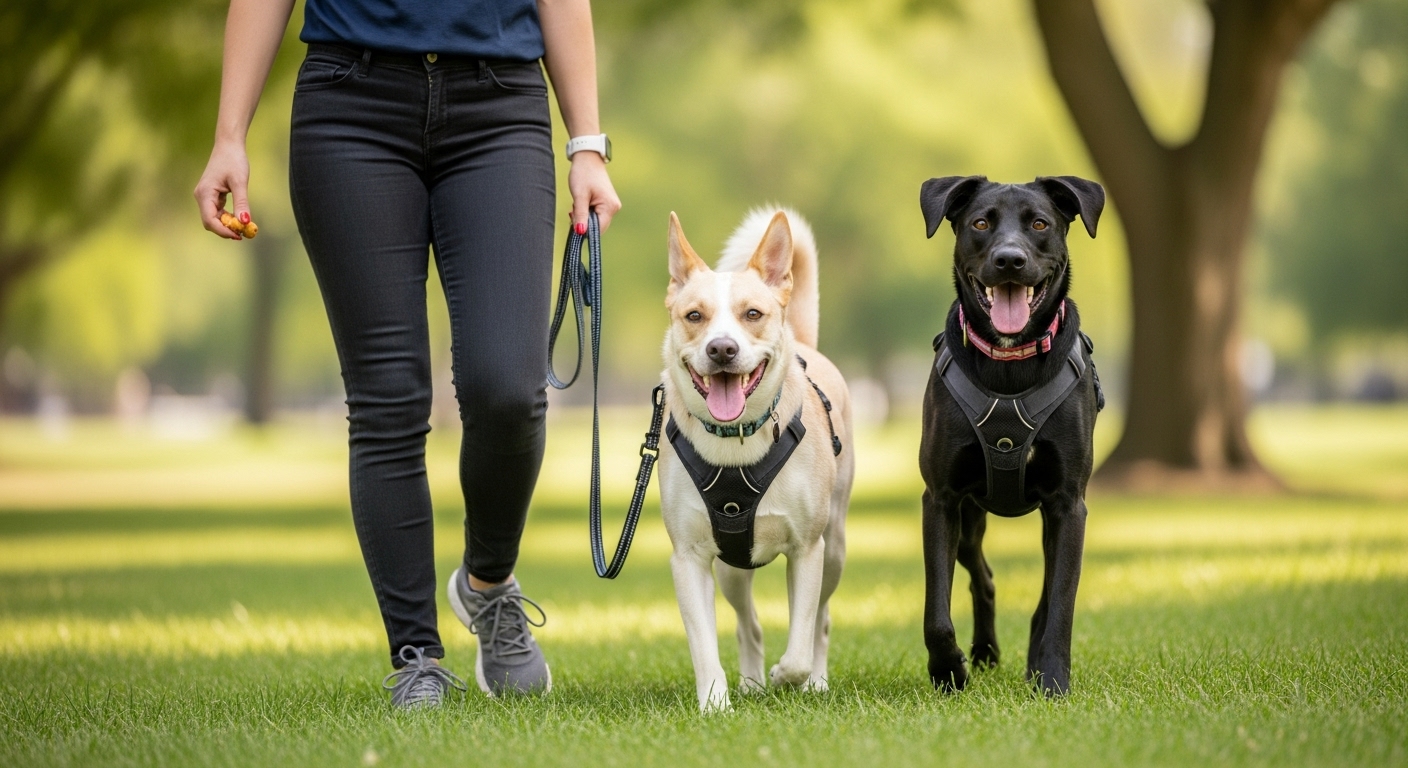Hey bestie Sara! 🐾 Even the sweetest pets can develop unwanted habits—like leash pulling, excessive barking, or fear of storms. Dive into these strategies to transform challenging behaviors into confident, relaxed routines.
1. Leash Pulling: Teaching Polite Walks
- Equipment Swap: Use a front-clip harness or head halter to reduce pulling leverage.
- The “Stop & Go” Method: When your dog pulls, stop walking immediately. Stand still until the leash relaxes, then resume with a cheerful “Let’s go.”
- Reward Front-Position Walking: Keep high-value treats in your pocket—when your dog walks beside you with slack in the leash, mark “Yes!” and treat.
- Short Sessions: Begin indoors or in a low-distraction area for 5–10 minutes, then increase duration and difficulty.
2. Excessive Barking: Finding the Why
- Identify Triggers: Doorbell, other dogs, boredom, or attention-seeking.
- Desensitization & Counter-Conditioning: If your dog barks at strangers outside the window, play recordings of those sounds at low volume and reward calm behavior, gradually increasing volume.
- “Quiet” Command: After a bark, say “Quiet,” wait for a pause in barking, then offer a treat. Repeat until they learn to associate the command with silence.
- Mental Stimulation: Puzzle toys, scent games, and training tricks tire out the mind and reduce boredom-barking.
3. Fear & Anxiety: Building Confidence
- Safe Zones: Create a cozy, quiet nook with your dog’s bed, toys, and an article of your clothing—someplace they can retreat when overwhelmed.
- Gradual Exposure: For noise fears (thunder, fireworks), play low-volume recordings while offering treats and play, then slowly raise volume over days or weeks.
- Calming Aids: Consider pheromone diffusers, pressure wraps (like Thundershirt), or—after consulting your vet—anxiety-reducing supplements.
- Confidence Games: Agility tunnels, basic obedience drills, and new walking routes give your dog a sense of mastery.
4. Destructive Chewing: Redirect & Reward
- Puppy Proof: Keep shoes, remotes, and tempting objects out of reach.
- Appropriate Chew Toys: Stock a variety—rubber Kongs, dental chews, and textured nylon bones.
- Interactive Feeding: Stuff kibble or treats into puzzle toys and Kongs to keep jaws busy.
- Supervised Freedom: Use baby-gates or crates when you can’t watch, and praise your dog when they choose appropriate toys over your slippers.
5. Jumping & Mouthing: Setting Boundaries
- Ignore & Reward Calm: Turn your back when greeting guests until all four paws are on the floor, then reward with a treat and verbal praise.
- “Off” Command: Place your dog in a sit and gently guide them off you saying “Off,” then treat when successful. Consistency is key—everyone who interacts with your dog must follow the same rules.

